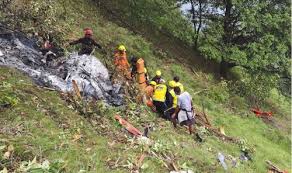A tragic helicopter crash on Sunday claimed the lives of seven people, including a toddler, as the chopper was ferrying Hindu pilgrims from the revered Kedarnath temple in India’s Uttarakhand state. The fatal incident occurred amid challenging weather conditions in the Himalayan region, where pilgrimages are especially popular during the summer months.
The helicopter, which had taken off from the Kedarnath shrine, crashed while en route to its destination. Disaster response official Nandan Singh Rajwar confirmed that all six passengers and the pilot were killed. The cause of the crash is believed to be poor weather, according to district tourism official Rahul Chaubey.
Uttarakhand Chief Minister Pushkar Singh Dhami expressed his condolences and said that rescue teams had been rushed to the remote crash site. “This is very sad news for the entire state and the families affected,” he said.
Kedarnath, located at an altitude of 3,584 metres (11,759 feet), is one of the holiest Hindu temples and attracts thousands of pilgrims every year. Due to the shrine’s high-altitude location and difficult terrain, helicopter services have become a preferred mode of transport, especially for elderly or wealthy devotees who want to avoid the strenuous trek.
However, the recent string of fatal accidents has raised serious concerns about the safety of air travel in the region. Just last month, six people died in another helicopter crash while heading to the same temple. The growing demand for fast access to pilgrimage sites has led to a boom in charter services, many of which now face scrutiny over their operational standards and adherence to safety protocols in mountainous weather conditions.
Sunday’s crash comes just days after another devastating aviation tragedy in India, where at least 279 people were killed when a passenger plane crashed into a residential area in Ahmedabad, Gujarat.
As investigations into both incidents continue, there is growing public pressure on authorities to implement stricter regulations for air travel in hazardous terrains, and to ensure that profit does not override safety in the sacred Himalayan routes.

